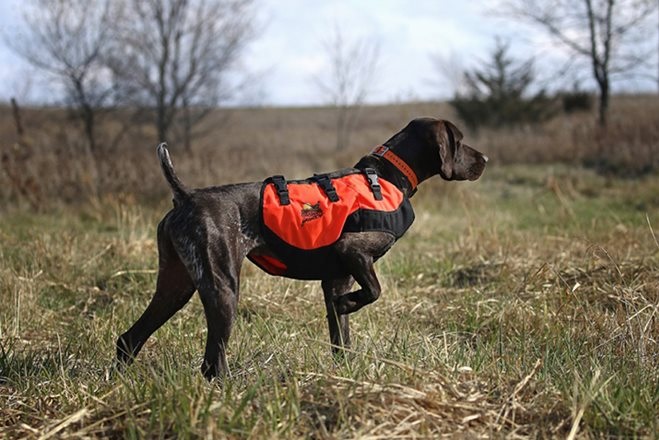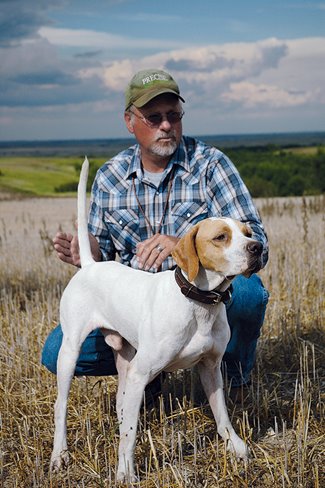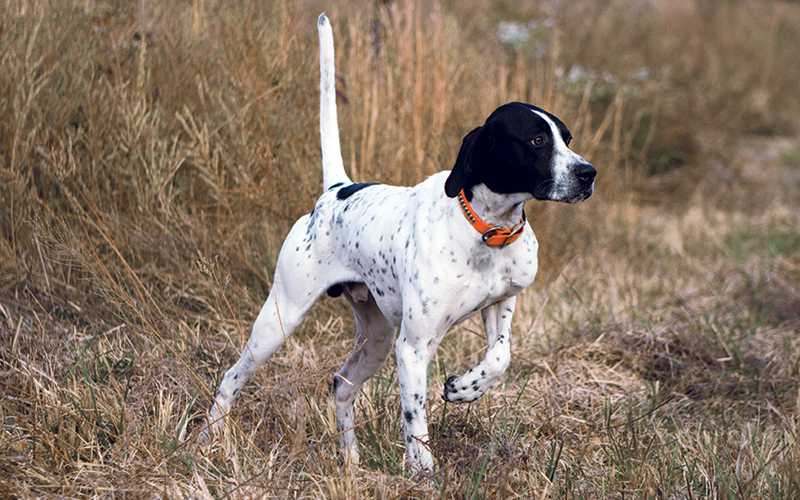“It takes birds to make a bird dog.” How many times have you heard someone trot out that mossy acorn? Dozens, maybe hundreds? Sure it’s a cliché. The thing about clichés, though, is that most of them contain at least a kernel of truth. It’s not the message that’s gotten stale, it’s the medium.

This is a prime example…but not all birds are created equal. Time was when pen-raised birds comprised a relatively small percentage of the total number of birds a typical dog “saw” on his way to becoming an effective hunting companion. But as the years have passed, and as fewer trainers, amateurs and professionals alike, enjoy the kind of access to wild birds that previous generations did, reliance on the pen-raised variety has increased tremendously.
Indeed, I don’t think I’m saying anything controversial when I say that the only wild birds a lot of dogs see these days are the ones they encounter during the hunting season. In other words, all their off-season training is done on pen-raised birds, whether those birds are planted by hand, secured in release traps, or liberated.
I should back up a bit and explain that I’m talking primarily about pointing dogs here. Training flushing dogs has always been heavily dependent on pen-raised birds so in that respect it hasn’t changed much.

Of course pen-raised birds are ideal, even indispensable, for many training applications, staunchness on point being perhaps the most obvious. When you need to “control the variables,” as they say, the combination of a pigeon and a remote release trap is hard to beat.
Still, there’s only so much a dog can learn from these sessions. A quarterback can learn how far to lead a receiver on the practice field, but let’s see him do it when he’s running for his life from a 300-pound defensive lineman.

It’s as simple as this: Wild birds teach lessons that their pen-raised counterparts can’t. The more wild bird experience and exposure you can give your young dog, the shorter his learning curve will be when he’s thrust into a “real world” hunting situation.
When I say “wild birds,” I’m not referring exclusively to pheasants. On the contrary, I’m referring inclusively to the entire upland buffet. Virtually every encounter your dog has with a wild upland gamebird, whether successful, unsuccessful, or a little of both, will teach him something of value, something he’ll be able to learn from and build on.
If pen-raised birds are the ABCs, wild birds are the complete works of Shakespeare.
Hit the road
Historically a lot of bird dog trainers, most but not all of them from the South, gypsied north in the summertime to work dogs on Huns, sharptails, and, in some places, pheasants.
Most of these “prairie camps” were in Manitoba, Saskatchewan or the Dakotas, and while their primary focus was the development of horseback dogs for field trials and southern quail hunting, plenty of shoe leather gun dogs also made the trip.
You could send a dog north pretty inexpensively in those days, and if nothing else, it got him out of the heat for a couple months, knocked off some of the rust and ensured he’d be fit as a fiddle (or nearly so) come Opening Day.
Well, for a variety of reasons, this scenario isn’t as common as it used to be. Far fewer trainers travel to the prairies than did 30 or 40 years ago and, with few exceptions, those who do devote their energies exclusively to field trial dogs.
This doesn’t mean that the prairie experience is any less beneficial for a young gun dog than it ever was, though. Just ask Ben Berg, the proprietor, along with his brother, Scott, of Berg Bros. Setters in Clearwater, Minnesota. The Bergs breed both English and red setters. Every summer Ben loads up a passel of their top prospects for a trip to “camp” in southeastern Montana. Huns and sharptails are the quarry there, and in Ben’s words “We’re looking for the dogs that will learn from their mistakes.”
Meaning that after getting too close and knocking a few coveys, as young dogs invariably will, they learn to establish point at a respectful distance. Known in the trade as the ability to “stand off” game, it’s one of the cornerstones of pointing dog performance irrespective of the bird being hunted—and there’s no better workshop for acquiring and honing this skill than big prairies. (Or, if not the prairies per se, a similary open, expansive landscape, such as a large CRP field.)
The prairies are also unsurpassed for teaching a young dog how to use the wind to his advantage, stay oriented to his handler and maintain a consistently forward ground pattern. These, too, are all critically important components of the pointing dog skill set.

“Wild birds present a different set of conditions,” says Ben Berg. “They’re not going to allow a dog to put his nose right on top of them the way pen-raised birds will. Certainly these young, late-summer/early fall birds don’t pose the kind of challenge that a late-season rooster does, but my view is that these easier birds can serve as a ‘bridge’ to the more difficult ones.”
Adds Berg, “Handling running pheasants is a learned skill and the only way to improve is to work on it. But the more wild bird scenarios you can expose your young dog to, the better equipped he’ll be to make that transition. This is why I stress to our customers that the focus during your dog’s first hunting season should be on proper execution, not on killing birds. Killing birds should be the reward for proper execution. If you lay this foundation in your dog’s first year, you’ll get 10 years of terrific hunting instead of a constant wrestling match.”
The pheasant dog advantage
When you stop to think about it, pheasant hunters have a built-in advantage in terms of training their dogs on wild birds. Why? Because in most places pheasant season opens in mid-October. This is anywhere from a month to six weeks after the seasons open for Huns and prairie grouse in the Great Plains and for ruffed grouse and woodcock in the Great Northwoods. So there are abundant opportunities to “ramp up” and help prepare your best hunting buddy to deal with the various subterfuges and chicaneries that the long-tailed birds will attempt to perpetrate on him. And you can do it while carrying a gun!
But even if hunting other birds prior to pheasant season doesn’t trip your trigger (or simply isn’t an option), you can almost certainly find a place where you can run your dog on wild birds before the shooting starts. At the same time, you’ll be getting in some pre-season scouting, so in that sense it’s an investment that pays a double dividend.
The rules on where and when you can train dogs vary from state-to-state, as does the legal definition of “training,” so check the regs or ask a conservation officer first.
And remember: It takes birds to make a bird dog.
Story by Tom Davis
